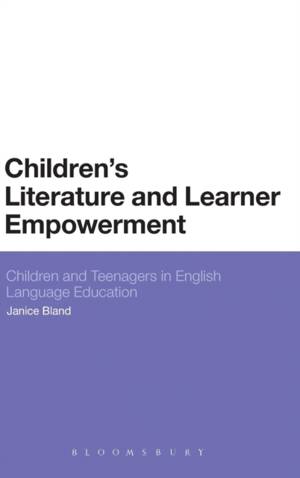
- Afhalen na 1 uur in een winkel met voorraad
- Gratis thuislevering in België vanaf € 30
- Ruim aanbod met 7 miljoen producten
- Afhalen na 1 uur in een winkel met voorraad
- Gratis thuislevering in België vanaf € 30
- Ruim aanbod met 7 miljoen producten
Zoeken
Children's Literature and Learner Empowerment
Children and Teenagers in English Language Education
Janice Bland
Hardcover | Engels
€ 339,45
+ 678 punten
Uitvoering
Omschrijving
Children's literature can be a powerful way to encourage and empower EFL students but is less commonly used in the classroom than adult literature. This text provides a comprehensive introduction to children's and young adult literature in EFL teaching. It demonstrates the complexity of children's literature and how it can encourage an active community of second language readers: with multilayered picturebooks, fairy tales, graphic novels and radical young adult fiction. It examines the opportunities of children's literature in EFL teacher education, including: the intertexuality of children's literature as a gate-opener for canonised adult literature; the rich patterning of children's literature supporting Creative Writing; the potential of interactive drama projects. Close readings of texts at the centre of contemporary literary scholarship, yet largely unknown in the EFL world, provide an invaluable guide for teacher educators and student teachers, including works by David Almond, Anthony Browne, Philip Pullman and J.K.Rowling. Introducing a range of genres and their significance for EFL teaching, this study makes an important new approach accessible for EFL teachers, student teachers and teacher educators.
Specificaties
Betrokkenen
- Auteur(s):
- Uitgeverij:
Inhoud
- Aantal bladzijden:
- 344
- Taal:
- Engels
Eigenschappen
- Productcode (EAN):
- 9781441144416
- Verschijningsdatum:
- 29/08/2013
- Uitvoering:
- Hardcover
- Formaat:
- Genaaid
- Afmetingen:
- 157 mm x 241 mm
- Gewicht:
- 657 g

Alleen bij Standaard Boekhandel
+ 678 punten op je klantenkaart van Standaard Boekhandel
Beoordelingen
We publiceren alleen reviews die voldoen aan de voorwaarden voor reviews. Bekijk onze voorwaarden voor reviews.











